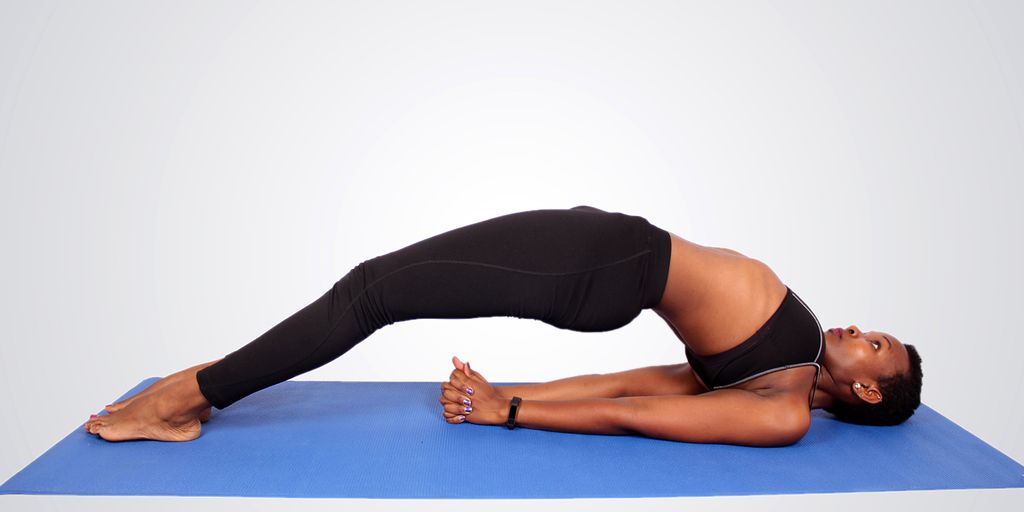
How to Properly Clean Your Yoga Mat: A Step-by-Step Guide
Maintaining a clean yoga mat is essential not only for your health but also for your overall yoga practice. A well-maintained mat can enhance your performance, extend the life of your mat, and provide a more pleasant and safe yoga experience. This guide will walk you through the importance of cleaning your yoga mat, the materials you'll need, step-by-step instructions, common mistakes to avoid, and natural cleaning solutions.
Key Takeaways
- Regular cleaning of your yoga mat is crucial for maintaining hygiene and preventing the spread of germs.
- Using natural and eco-friendly cleaning solutions can be effective and better for the environment.
- Proper drying and storage of your yoga mat can extend its lifespan and maintain its quality.
- Avoid using harsh chemicals as they can damage your yoga mat and pose health risks.
- Establishing a regular cleaning schedule will help keep your yoga mat in optimal condition.
Why It's Important to Clean Your Yoga Mat
Health Benefits of a Clean Yoga Mat
A clean yoga mat is essential for maintaining good hygiene. Regular cleaning helps to remove sweat, dirt, and bacteria that accumulate over time. This reduces the risk of skin infections and other health issues. Additionally, a clean mat provides better traction, which is crucial for maintaining balance and preventing injuries during practice.
Impact on Yoga Practice
The cleanliness of your yoga mat can significantly impact your yoga practice. A dirty mat can become slippery, making it difficult to hold poses and maintain stability. This can lead to a less effective workout and increase the risk of injury. On the other hand, a clean mat enhances your practice by providing a stable and comfortable surface.
Longevity of Your Yoga Mat
Proper maintenance and cleaning can extend the life of your yoga mat. Over time, dirt and sweat can break down the material of the mat, causing it to wear out more quickly. By keeping your mat clean, you can ensure that it remains in good condition for a longer period, saving you money in the long run.
Keeping your yoga mat clean is not just about hygiene; it's about enhancing your overall yoga experience and ensuring the longevity of your equipment.
Materials Needed for Cleaning Your Yoga Mat
To ensure your yoga mat is thoroughly cleaned, you'll need a few essential supplies. Having the right materials can make the cleaning process more effective and efficient.
Essential Cleaning Supplies
- Water
- Mild dish soap or gentle detergent
- Soft cloth or sponge
- Empty spray bottle
- White vinegar
Optional Cleaning Tools
- Tea tree oil (optional)
- Essential oils for fragrance (optional)
- Soft-bristled brush for stubborn stains
- Microfiber towel for drying
Choosing the Right Cleaning Products
When selecting cleaning products, it's important to choose those that are gentle on your mat. Avoid using harsh chemicals that can damage the material. Opt for natural and eco-friendly options whenever possible.
Using the right cleaning supplies not only ensures a clean mat but also helps maintain its longevity and performance.
Step-by-Step Guide to Cleaning Your Yoga Mat
Preparing Your Yoga Mat for Cleaning
Before you start cleaning, make sure to gather all necessary supplies and find a clean, flat surface to work on. Remove any loose dirt or debris by shaking or brushing off your mat.
Cleaning Methods for Different Types of Yoga Mats
Different materials require different cleaning methods:
- PVC Mats: Use a mixture of warm water and mild dish soap. Wipe down with a soft cloth.
- Rubber Mats: Opt for a solution of water and vinegar. Avoid using soap as it can degrade the material.
- TPE Mats: Clean with a mixture of water and a few drops of essential oil for a fresh scent.
Drying and Storing Your Yoga Mat
After cleaning, it's crucial to dry your mat properly to prevent mold and mildew. Lay it flat or hang it over a shower rod. Ensure it is completely dry before rolling it up and storing it in a cool, dry place.
Proper drying and storage extend the life of your yoga mat and keep it hygienic for your next practice.
Common Mistakes to Avoid When Cleaning Your Yoga Mat
Using Harsh Chemicals
One of the most common mistakes is using harsh chemicals to clean your yoga mat. These can damage the material and reduce its lifespan. Instead, opt for gentle cleaning solutions like a vinegar and water mixture or a mild dish soap.
Skipping Regular Cleaning
Skipping regular cleaning can lead to a buildup of sweat, dirt, and bacteria on your mat. Regular maintenance is crucial to keep your mat hygienic and in good condition. Aim to clean your mat at least once a week, or more frequently if you practice daily.
Improper Drying Techniques
Improper drying techniques can cause your mat to develop mold or mildew. Always ensure your mat is completely dry before rolling it up. Lay it flat or hang it to dry in a well-ventilated area.
Consistent care and proper cleaning methods will extend the life of your yoga mat and enhance your practice.
Natural and Eco-Friendly Cleaning Solutions
Homemade Cleaning Recipes
Creating your own cleaning solutions at home can be both cost-effective and environmentally friendly. A simple mixture of water, white vinegar, and a few drops of essential oils can work wonders. Essential oils like tea tree or lavender not only add a pleasant scent but also have natural antibacterial properties. This homemade solution is perfect for those who want to avoid harsh chemicals.
Benefits of Natural Cleaners
Using natural cleaners has several benefits. Firstly, they are generally safer for your skin and respiratory system. Secondly, they are less likely to damage the material of your yoga mat. Lastly, natural cleaners are better for the environment, reducing your carbon footprint. Eco-friendly products often come in recyclable packaging, further contributing to sustainability.
Eco-Friendly Cleaning Products
If you prefer ready-made solutions, there are several eco-friendly cleaning products available on the market. For instance, the Asutra Yoga Mat Cleaner Spray (Peaceful Lavender) is a popular choice. It contains organic essential oils and leaves no slippery residue, making it ideal for fitness gear and gym equipment. Look for products that are biodegradable and free from synthetic fragrances and dyes.
Opting for natural and eco-friendly cleaning solutions is a small but impactful step towards a healthier lifestyle and a cleaner planet.
How Often Should You Clean Your Yoga Mat?
Regular cleaning of your yoga mat is crucial for maintaining hygiene, extending its lifespan, and enhancing your practice. Factors such as frequency of use, intensity of workouts, and environmental conditions can influence how often you should clean your mat. Signs that indicate your mat needs cleaning include visible dirt, unpleasant odors, and a decrease in grip. Establishing a cleaning schedule based on these factors will help you maintain a fresh and clean yoga mat.
Deep Cleaning Your Yoga Mat
When to Deep Clean
Deep cleaning your yoga mat is essential when you notice it becoming heavily soiled or if it starts to emit an unpleasant odor. Regularly washing your yoga mat can prevent the buildup of bacteria and extend its lifespan. Aim to deep clean your mat at least once a month, or more frequently if you practice daily.
Deep Cleaning Techniques
- Prepare a Cleaning Solution: Mix mild soap or a specialized yoga mat cleaner with warm water.
- Wipe Down the Mat: Use a soft cloth or sponge to wipe down the entire surface, paying special attention to heavily soiled areas.
- Rinse Thoroughly: Rinse the mat with clean water to remove any soap residue.
- Dry Properly: Lay the mat flat or hang it to air dry completely before rolling it up.
Post-Deep Cleaning Care
After deep cleaning, ensure your mat is completely dry to prevent mold and mildew. Store it in a cool, dry place away from direct sunlight. This will help maintain the mat's integrity and ensure it remains in good condition for your next practice.
Deep cleaning your yoga mat not only keeps it hygienic but also enhances your overall yoga experience by providing a clean and fresh surface to practice on.
Keeping your yoga mat clean is essential for a healthy practice. Discover the best tips and products for deep cleaning your yoga mat on our website. Don't let dirt and grime disrupt your flow—visit us today!
Conclusion
Maintaining a clean yoga mat is essential for both hygiene and the longevity of your mat. By following the step-by-step guide provided, you can ensure that your mat remains free from dirt, sweat, and bacteria, allowing you to practice yoga in a safe and comfortable environment. Regular cleaning not only preserves the quality of your mat but also enhances your overall yoga experience. Remember, a clean mat is a happy mat!
Frequently Asked Questions
How often should I clean my yoga mat?
It depends on how frequently you use it. Generally, cleaning it once a week is a good rule of thumb if you practice regularly. For less frequent use, cleaning it once a month should suffice.
Can I use household cleaners on my yoga mat?
It's best to avoid harsh chemicals as they can damage the mat. Opt for natural or mat-specific cleaners instead.
What is the best way to dry my yoga mat after cleaning?
The best way to dry your yoga mat is to hang it up or lay it flat in a well-ventilated area. Avoid direct sunlight as it can degrade the material.
Can I put my yoga mat in the washing machine?
It's not recommended for most yoga mats as the machine's agitation can damage the material. Always check the manufacturer's guidelines.
How can I remove stubborn stains from my yoga mat?
For stubborn stains, use a mixture of water and mild soap. Gently scrub the area with a soft cloth or sponge.
Are there eco-friendly cleaning options for yoga mats?
Yes, there are several eco-friendly cleaning solutions such as vinegar and water mixtures, or specialized eco-friendly mat cleaners available in the market.


